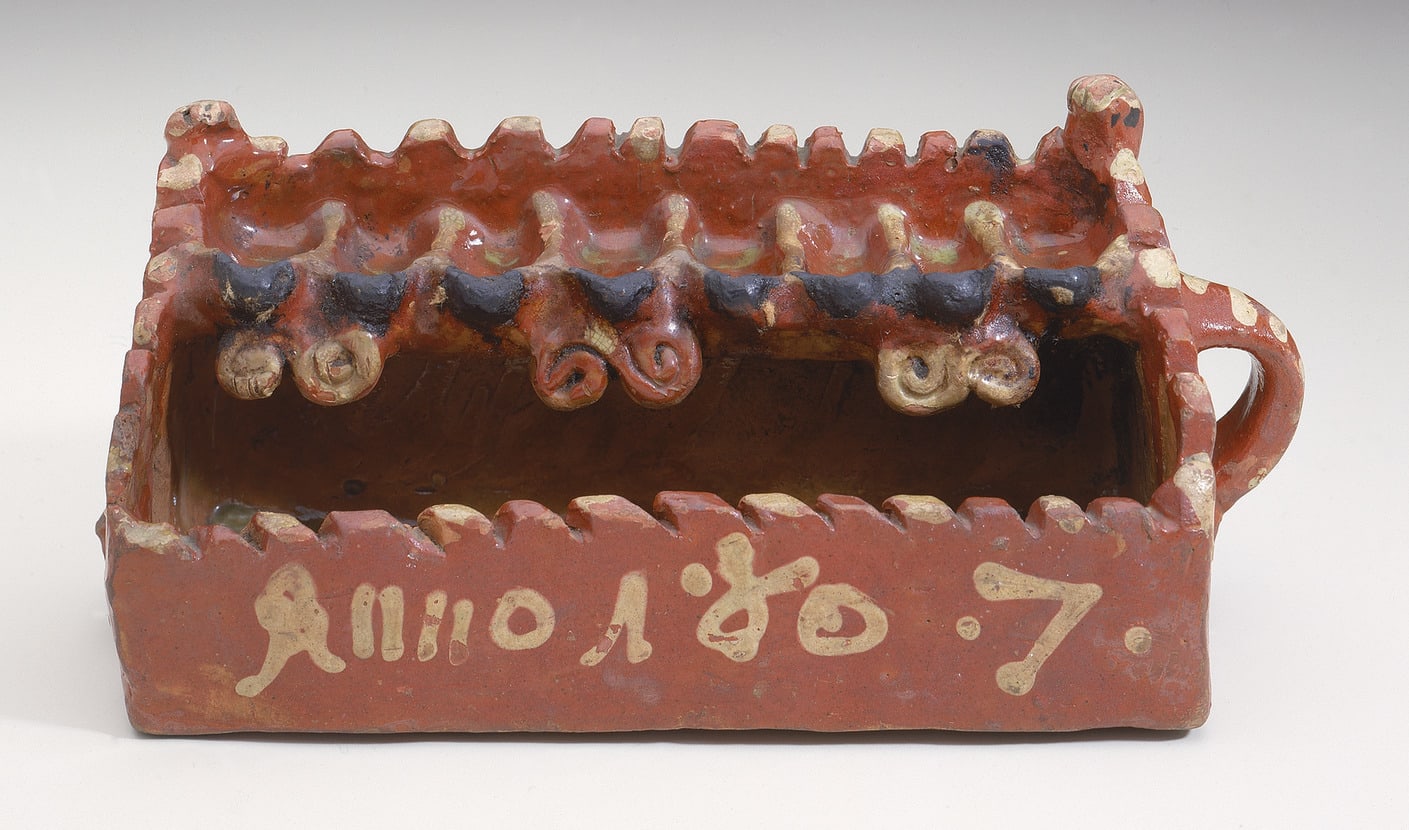
- Object Name:
- Hanukkah Lamp
- Artist/Maker:
- C K
- Place Made:
- Probably Münster, Prussia (now in Germany)
- Date:
- 1807 (date of inscription)
- Medium:
- Stoneware: slipped, painted, and glazed
- Dimensions:
- 4 1/2 × 10 1/2 × 3 7/8 in. (11.4 × 26.7 × 9.8 cm)
- Credit Line:
- Gift of Dr. Harry G. Friedman
- Accession Number:
- F 4939
On View
German ceramic Hanukkah lamps are rare, and only nine examples have been published. Most imitate the forms of German pewter lamps, with the row of lights across the middle of the backplate and a wide drip pan below. The method of decoration of the Jewish Museum lamp, consisting of a reddish-brown slip and cream paint that have been glazed, is characteristic of several regions of Germany, particularly Hesse and the Lower Rhineland, and it spread throughout Germany and beyond. It is impossible to identify the exact town where this lamp was made, even if the signature can be read as Münster, since there are a number of German sites with this name. It is unlikely to be the major city of Münster, since the production of lead-glazed ceramics in Germany was generally carried out in the countryside rather than cities, in order to be near fuel sources and to minimize pollution from the smoke and chlorine gas produced.
The inclusion of the year in Latin on this lamp reflects the practice, common in Europe since the sixteenth century, of putting a date on a wide range of domestic and religious objects in many media. This may have been done to commemorate a specific occasion for which the piece was commissioned, or perhaps it simply indicates when the piece was made. Often, as in this lamp, the date constitutes the chief decorative element of the piece.
The inclusion of the year in Latin on this lamp reflects the practice, common in Europe since the sixteenth century, of putting a date on a wide range of domestic and religious objects in many media. This may have been done to commemorate a specific occasion for which the piece was commissioned, or perhaps it simply indicates when the piece was made. Often, as in this lamp, the date constitutes the chief decorative element of the piece.
Information may change as a result of ongoing research.